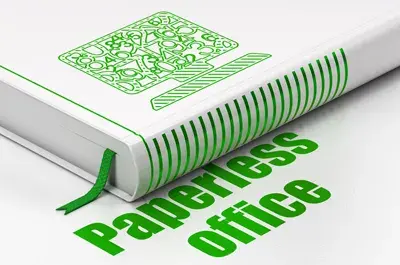The implementation of EHR systems and web-based medical billing software is helping medical offices go paperless, improve efficiency, reduce costs, and enhance care. A well-implemented paperless medical office can improve workflow, ensure document security, improve billing and collection tasks, better manage reimbursements and minimize denials.
Here are the five ways to minimize the use of paper and improve efficiency in health care practices:
- Electronic statements and e-billing – Transitioning to paperless statements and online bill payments is one of the most effective ways of reducing the use of paper. This lowers costs on postage and stationery, and also reduces staff time spent on coordinating invoices, checks, and mailing. Managing office finances through the web makes payments quicker and much easier to track.
- Electronic faxing – Healthcare practices receives a huge amount of faxes everyday and the expenses for maintaining or leasing a fax machine to produce copies of all the documents can be very high. Getting an e-fax account would help resolve these issues. With e-fax, incoming faxes are received as PDF files to a specific email address instead of being printed automatically. This saves time on document management, making archiving easier with integration of the documents into the practice’s EHR system. It also minimizes the risk of losing or misfiling faxes.
- E-signature – E-signatures can be used to sign a digital document without printing it. This automates document workflows as data fields can be collected and verified at the point of signature. It also eliminates the need for printing which saves time and money and also improves compliance with no incomplete forms.
- Collaborative documentation – The use of collaborative documentation tools such as Google Docs make document sharing easier. Electronic documents can be shared among providers, edited, and reviewed which promotes more efficient communication and enhanced patient care.
It’s obvious that physicians who take advantage of the latest technological innovations can establish a paperless practice that is efficient, patient centric, and profitable. However, medical document scanning and conversion can prove quite challenging for physicians offices with large volumes of paper records. That’s why many practices are seeking the help of professional healthcare business process outsourcing companies to moving from a paper medical record system to an electronic medical record system. Such companies have a dedicated team that can provide fully HIPAA-compliant, affordable document conversion solutions using the latest technology.



0 Comments